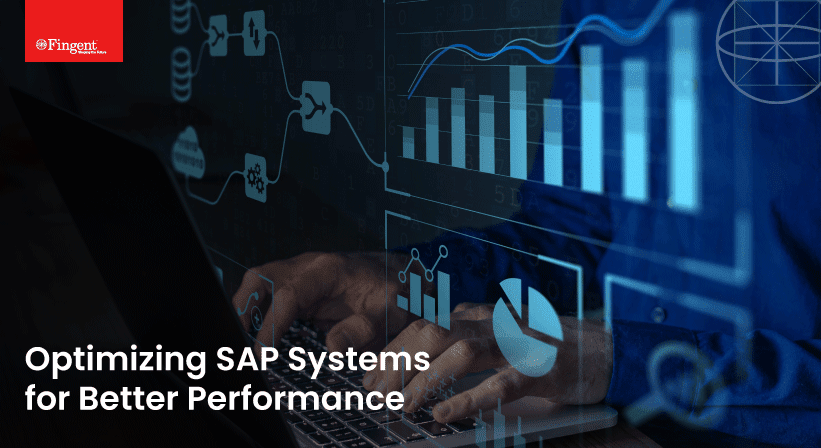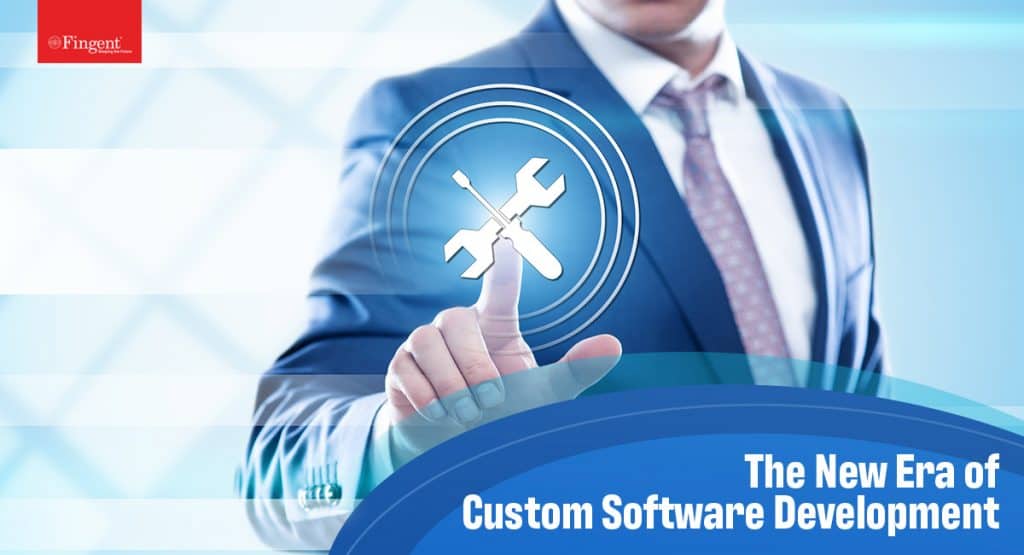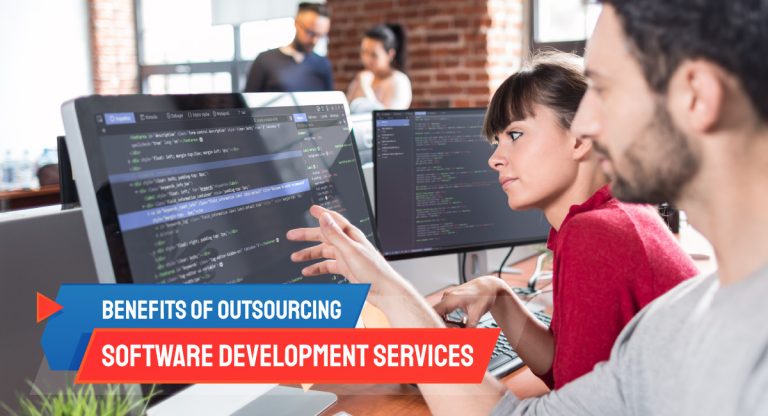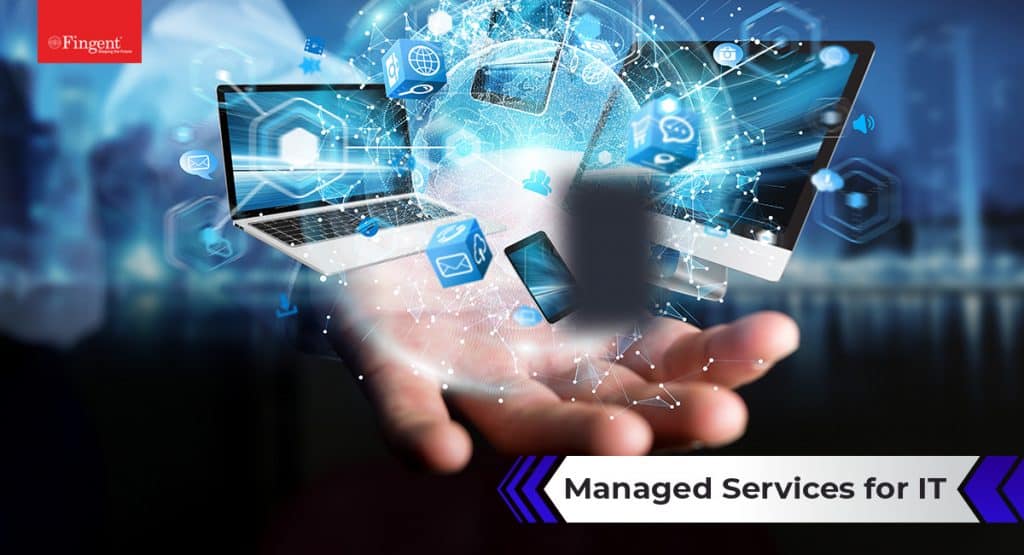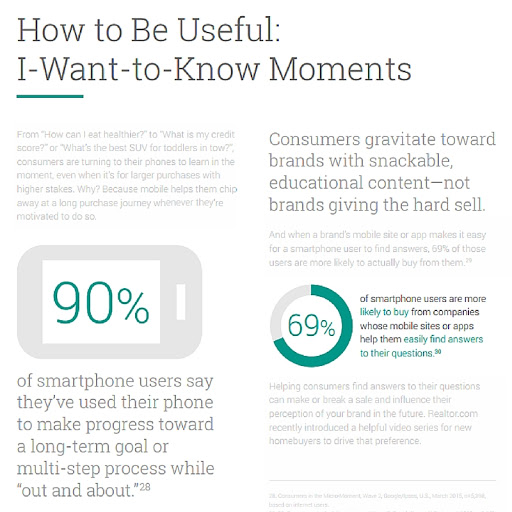Tag: customer engagement
Businesses find themselves at a critical juncture as customer expectations soar and their loyalty hangs by a thread. The key to captivating and retaining customers lies in mastering the art of seamless omni-channel experiences—an unparalleled approach that fuels growth, builds unbreakable bonds, and sets organizations apart in the digital era.
Embracing this transformative strategy is no longer a choice but a necessity. Thankfully, at the forefront stands SAP Customer Experience, empowering businesses to redefine the very essence of customer engagement.
In this blog, we dive into the crucial significance of delivering seamless omni-channel experiences in the digital era and explore the pivotal role played by SAP Customer Experience in achieving omni-channel excellence. We will also take a look at the success stories of industry-leading companies that benefited from SAP customer experience.
Meaning and Significance of Omni-Channel Customer Experiences
Today, customers’ journey has become complex and dynamic. It spans various touchpoints such as websites, mobile apps, social media platforms, physical stores, and more.
Omni-channel experiences refer to the seamless integration and synchronization of these channels, providing customers with a consistent and cohesive journey regardless of the device or platform they choose to engage with.
It involves delivering a unified and personalized experience that transcends individual touchpoints. To achieve success most businesses have adopted SAP customer experience. Let’s delve into it to understand how it can enhance omni-channel experience.
SAP Customer Experience – Where the Boundaries Between Channels Dissolve
SAP Customer Experience stands as a transformative force, reshaping how businesses engage with their customers across the entire journey. From capturing initial interest to post-purchase satisfaction, SAP Customer Experience covers every aspect of the customer lifecycle, enabling organizations to forge lasting relationships and foster brand loyalty.
By leveraging the power of integrated data, intelligent insights, and personalized content, SAP Customer Experience empowers organizations to deliver consistent, contextual, and captivating experiences across every touchpoint.
With SAP Customer Experience, businesses can unlock the true potential of omni-channel excellence, creating a symphony of interactions that resonate with customers on a profound level. By seamlessly connecting commerce, marketing, sales, service, and customer data, SAP Customer Experience sets the stage for organizations to thrive in the digital era, building lasting customer relationships and achieving unparalleled success.
SAP Customer Experience- Where Extraordinary Customer Experiences Take Center Stage
SAP customer experience strategies not only meet customers’ rising expectations but also provide valuable insights into their preferences and behaviors, enabling organizations to make data-driven decisions and tailor their offerings more effectively. Consider a few key elements of a successful omni-channel strategy:
- Weaving the Threads of Connection: Like the threads woven meticulously into the fabric, a successful omni-channel strategy integrates various channels, ensuring they work harmoniously to deliver a consistent and unified brand experience.
- Insights as Your North Star: By leveraging data from various channels, you gain a deep understanding of your customers’ preferences, behaviors, and needs. These insights fuel your strategy, allowing you to create highly personalized experiences that resonate with each individual.
- Personalization: Just as a perfectly tailored suit enhances confidence, personalization in the omni-channel realm enhances customer satisfaction. By tailoring content, recommendations, and promotions to individual preferences, you create meaningful connections that build loyalty and trust.
- Orchestrating Symphony of Consistency: Consistency across channels is the melodic backbone of your strategy. From the visual identity to the tone of voice, maintaining a consistent brand presence reinforces recognition and cultivates a sense of trust among customers.
- Real-Time Responsiveness: Being able to engage with customers in real-time enables you to provide immediate support, address concerns, and deliver personalized offers. This responsiveness creates a delightful experience that makes customers feel heard and valued.
- Seamlessness: Customers should effortlessly move between channels, with their journey continuing seamlessly, preserving their progress, preferences, and context.
Read more: Optimizing SAP Systems for Better Performance.
Real-World Success Stories of SAP Customer Experience Implementation
SAP Customer Experience presents compelling use cases for different industries and challenges. By leveraging the suite’s capabilities, organizations can overcome the challenges they face, be it in retail, e-commerce, or B2B sectors. From creating a unified shopping experience, and driving personalization, to streamlining sales processes and enhancing customer service, SAP Customer Experience provides the solutions needed to achieve omni-channel excellence and deliver exceptional customer experiences.
1. Retail industry: Creating a unified shopping experience across online and offline channels
Challenge: The retail industry faces the challenge of bridging the gap between online and offline channels to deliver a seamless shopping experience. Customers expect consistent product information, pricing, and promotions regardless of whether they interact with a brand online or in a physical store. Aligning inventory, customer data, and processes across these channels becomes crucial for success.
Solution: SAP Customer Experience offers a comprehensive solution for retailers to overcome this challenge. By integrating SAP Commerce Cloud with their existing systems, retailers can synchronize product catalogs, pricing, and inventory in real-time. This ensures that customers receive accurate and consistent information, whether they browse online or visit a store. Additionally, features like click-and-collect and endless aisle empower retailers to offer flexible shopping options, creating a unified experience that seamlessly blends online and offline channels.
2. E-commerce sector: Driving personalized recommendations and targeted marketing campaigns
Challenge: E-commerce businesses strive to deliver personalized experiences that resonate with customers, driving engagement and conversions. However, understanding customer preferences, delivering relevant recommendations, and executing targeted marketing campaigns at scale can be a significant challenge.
Solution: SAP Marketing Cloud, a component of SAP Customer Experience, equips e-commerce businesses with the tools to address this challenge. By leveraging customer data, machine learning, and predictive analytics, SAP Marketing Cloud enables businesses to understand individual customer preferences and behavior. This valuable insight fuels personalized product recommendations, tailored content, and targeted marketing campaigns across various channels. The result is a highly engaging and relevant experience that resonates with customers, increasing conversions and fostering brand loyalty.
3. B2B organizations: Streamlining sales processes and enhancing customer service through omni-channel support
Challenge: B2B organizations often have complex sales cycles and multiple touchpoints for customer interactions. The challenge lies in streamlining these processes and providing consistent support across channels while maintaining personalized and high-quality customer service.
Solution: SAP Sales Cloud and SAP Service Cloud, components of SAP Customer Experience, are tailored to address the unique needs of B2B organizations. SAP Sales Cloud offers comprehensive sales management tools, empowering sales teams with real-time insights, streamlined processes, and collaborative capabilities. This allows for efficient management of complex sales cycles and ensures a consistent experience for customers, regardless of the channel they engage through.
Watch now: Why Businesses Should Opt for SAP to Fuel Their Growth & Success?
Best Practices for Crafting Seamless Omni-Channel Journeys through SAP Customer Experience
Following best practices like these mentioned below will help in successfully implementing SAP Customer Experience:
- Conduct a comprehensive analysis of existing customer touchpoints: Conducting a comprehensive analysis involves examining all the channels through which customers interact with your brand, including websites, mobile apps, social media platforms, physical stores, and call centers. This will help you can identify areas of improvement and uncover opportunities for delivering a seamless omni-channel experience.
- Define clear omni-channel objectives and KPIs: Well-defined objectives and KPIs can help you can track progress, measure success, and make data-driven decisions throughout the implementation process.
- Establishing seamless integration between SAP Customer Experience modules and existing systems: By integrating SAP Customer Experience with existing systems such as CRM or ERP, you can leverage existing data and workflows, streamline operations, and maximize the value of the solution.
- Continuous monitoring and optimization of omni-channel experiences: Implementing SAP Customer Experience is not a one-time task but an ongoing journey of continuous improvement. Identifying areas for optimization can enable you to make informed decisions to refine and enhance the omni-channel experiences you deliver, ensuring they remain relevant, engaging, and effective.
How Fingent Can Help Leverage SAP Customer Experience
Partnering with Fingent can unlock the full potential of SAP Customer Experience for your business. With our expertise in SAP implementation and customization, we can guide you through the journey of leveraging emerging technologies, integrating IoT devices, and harnessing predictive analytics.
Our deep understanding of customer experience trends and innovative solutions enables us to tailor SAP Customer Experience to your specific needs, ensuring that you stay ahead of the curve in this rapidly evolving landscape.
Reach out to us, and let’s discuss your needs.
Stay up to date on what's new

Featured Blogs
Stay up to date on
what's new



Talk To Our Experts
If you’re a business with an expanding online retail footprint, your hard work actually begins once a customer places an order. Each new order triggers a multifarious chain reaction, right from confirming the order through payment acceptance to picking, packing, and finally shipping the consignment to the right location. As digital shopping becomes the primary buying method today, it’s important for brands to simplify online ordering for their customers.
How can you make your order processing and fulfillment smooth enough for both your customers and employees?
If you’re a small business, you might be able to handle your orders with basic pre-packaged software. But as your business grows, you need a customized order management system to fulfill the orders gushing in. With a custom order processing software, your business can bring the best of both worlds, that is, streamline your order processing and fulfillment and simplify order placement for your customers.
View Infographic: Custom Software vs. Commercial Off-the-shelf Solutions
What is an Order Management Software?
Order management refers to the set of processes used by an organization to track, manage, and fulfill an order, right from the time when it (order) is placed by a customer to when it is safely delivered at the right destination.
Order management systems are software tools used to monitor the end-to-end customer order journey. With order management software, you can organize and automate processes, keep track of your merchandise, control the delivery process, and ensure that your customer receives the right order at the right time in a good condition.
Say you’re running an online medical procurement store. A clinic places an order with you for disposable saliva ejectors. Your order management software checks if the payment was successful, send the order details to your warehouse, tracks the order form when it is being picked, packed, and shipped, and finally ensures that the saliva ejectors were delivered properly.
Modern order management systems are capable of going beyond delivery and order fulfillment. They can record customer service actions, track returns or exchanges, prevent shipping errors and processing delays, and save profits by reducing refunds and reshipping costs. By collecting vital metrics that define your success and efficiency, your business can identify what’s working and what needs to be improved.
Why Do You Need a Customized Order Processing Software?
Investing in an off-the-shelf order processing system is enough if you’re content with your business’s status quo. But it wouldn’t suffice if you’re thinking of expanding your business. Offering personalization is the only way to make yourself stand out from the competition and attract more customers. That means, making some serious changes to your existing workflow. When you try to alter your current workflow to incorporate personalization, your canned software offers limited ways to do it successfully. This is where a custom software solution comes to your rescue.
Watch Video: Why Your Business Requires Custom Software
Custom order management software allows you to configure the workflows required to meet your specific business needs. If off-the-shelf software provides you with 80% of the functionality, custom software allows you to tailor the remaining 20% (or even more) to enhance your workflows and make your business future-proof.
Some Inspiring Stories
We’ve done it in the past and we’re doing it now as well!
We’ve simplified what was once considered complex order processing, with custom-built ordering software that lets customers place orders quickly and allows businesses to track every order with improved efficiency and sophistication. Here’re a few inspiring stories.
1. Cheetah Transportation Systems
Texas-based Cheetah Transportation Systems leveraged Fingent’s custom software development services to implement a personalized transportation management system. The new system allows Cheetah’s customers to view their order status in real-time and access up-to-date shipping data. With a customized software solution, Cheetah re-imagined their logistics and supply chain operations:
- Streamlined and accelerated ordering, tracking, and delivery processes
- Cut licensing and subscription costs by eliminating complex third-party software integrations
- 30% improvement in Turn Around Time (TAT)
- 40% time-saving attained through automated tasks and real-time reporting
2. AEC Advisors
Another pretty interesting digital transformation story is that of AEC Advisors. The New York-based investment banking and corporate finance advisory firm experienced a business transformation with a customized survey management cum analytics and reporting software developed by Fingent.
- Ability to create and circulate customized surveys prior to the yearly conference held by AEC Advisors
- Quickly generate KPI reports based on survey responses
- Secure, scalable, and flexible IT architecture to address AEC’s specific needs
- Make it convenient for AEC’s clients to securely share complex financial information
3. Lakeside Cabins
A custom order management application for a manufacturer who builds customized sheds for growing families needing more space! That’s the story of Lakeside Cabins, headquartered in Ohio. The manufacturer wanted us to build an in-house software customized to support the different stages of their building processes. Fingent created a personalized, flexible, easy-to-maintain, and scalable order management software with the following features:
- Custom-built 3D configurator that allows customers to configure building designs, generate floor plans and invoices, and reduce human errors
- Integrated modules to manage CRM, dealers, orders, purchase orders, work orders, and route-optimized delivery schedules
Interested to explore similar success stories? Click here to read our top case studies.
Business Benefits of Custom Order Management Software
1. Features that fit your business needs
A customized order management software offers the best features your business would actually require. Collaborate with the right software development partner to identify your unique business needs. Avoiding unwanted features helps you get cost-effective custom software within a shorter development cycle.
2. Flexibility
Your customers may want to split orders and deliver them to multiple addresses. Using an off-the-shelf software to split your shipments will increase your fulfillment costs due to longer development cycles. A customized order processing software offers the flexibility to split consignments, choose multiple payment modes for a single order, and a horde of other capabilities that will enable you to deliver an Amazon-like experience to your customers.
Read more: Custom software solutions – the ideal way to build business apps
3. Easy to integrate with other tools
Most off-the-shelf software don’t offer flexibility in integration, making you spend more on missing software integrations. In contrast, custom order processing software offers makes it easy to integrate with necessary third-party ware that can improve the accuracy of your order fulfillment process. Fingent develops powerful APIs and plugins that support seamless integration of third-party tools with your custom software.
4. Automation of mundane tasks
When your custom order management software does the heavy-lifting by automating invoicing, billing, banking integration, payment, and stock management, you can focus on improving your customer service. Automating mind-numbing operations will allow you to keep your order processing tasks much more organized and easier.
5. Flexible pricing
Most pre-packaged order management solutions offer functionalities that your business doesn’t require and demand you to pay extra for useful features. A custom software solution is designed and developed after defining your objectives clearly. So you end up paying only for the features you use.
Read more: Know What’s Driving Custom Software Development Costs in 2022
Develop Your Custom Software Application with Fingent
When you’re in complete control of your order management system, you will attain better visibility, productivity, and cost control. Custom software befits businesses of any size- small or large, as it can save your costs and support your long-term growth plans. Whether your requirement is to develop a custom inventory/ order/ warehouse/ transportation management software, our developers have considerable experience in handling anything that comes our way.
Read more: How to Choose the Right Custom Software Development Firm
Our core experience in developing B2B e-commerce applications, customized product ordering systems, tailored self-service payment portals, and an array of bespoke software solutions makes us a trusted software development partner to hundreds of organizations worldwide, including Fortune 500 companies.
If you want to learn more about custom software or would like to know how it can improve your bottom line, get in touch with us.
Stay up to date on what's new

Featured Blogs
Stay up to date on
what's new



Talk To Our Experts
2020 has proved beyond doubt that technology partnership is an essential element in the creation of a successful business. Sticking to a DIY strategy may sound good in the wake of economic upheaval. But honestly, no business wants to “just survive.” Every business in every sector wants to thrive and stay relevant despite the challenges.
In recent times, technology keeps changing far too quickly. Missing the first door of opportunity may mean greatly diminished market potential. On the contrary, partnering with a technology company offers the quickest way to ensure an impactful presence in your market segment.
Do you own a business? Or are you an entrepreneur with multiple companies? Is the concept of a “technology partner” too abstract for you? If so, we are here to help you understand why partnering with a reliable tech company is the need of the hour. Here’s also highlighting the benefits of such a partnership.
Read more: Technology Investments: How to gain maximum value?
Why is Partnering with Tech Companies the Need of the Hour?
Most businesses around the world are recovering from pandemic-related economic hardship. Although this has scared many, it is clear that businesses need to become more ‘upheaval-ready.’ Partnering with a tech company can make your business ‘upheaval-ready’ while elevating your business. Let’s now consider specific reasons.
1. Apprehensive about future challenges?
During the pandemic, you may have had to adapt to new ways of doing business. There is a high probability that this change may not end here. The next few years may experience aftershocks due to health and safety standards and economic fallouts.
Thankfully, new technologies and new ways of using old technologies can help you meet your current and future business needs. What do you implement though and how in the world will you go about doing that? This is where partnering with a tech company can be a boon.
2. You need specific talent
Consider this scenario: you have new projects that require a specific skill set that your current team does not possess. On the other hand, it is also not the right time to hire. Plus, you do not have the time or resources to look for such talent.
Additionally, bringing in new talent that would require extensive training can be way more exhausting than it may seem. What is your best option? A tech partner! Your partner will be able to provide the needed skillset. This may prove to be more cost-effective and less exhausting than hiring and training a new candidate.
3. New technology seems painfully elusive
Do you feel that your competitors are pushing ahead with the latest technology while you can’t even begin to wrap your head around it? Are you anxious that your business will suffer if you do not adopt digital transformation immediately?
If so, worry no more! A partnership with a technology company is exactly what you need to give your business that edge that seems so elusive.
Read more: Why Software Development Outsourcing is a Smart Move Now?
Benefits Of Partnering with Technology Company
Collaboration is key to creativity – Walter Isaacson
Collaboration that brings in creativity and spearheads agility is what you need right now. Here are some direct and indirect benefits of tech partnership:
1. Provides a new set of eyes backed with experience
Does your business require multiple levels of testing and repeated proofreading and fact-checking stages? Do you occasionally require external evaluation to identify issues you cannot see immediately? Your tech partner can do all of these for you. Also, they may be able to provide unique solutions for your specific needs.
Allowing a tech partner to take care of these needs can free your time and resources to stay focused on what you do best.
2. Offers skillset and solutions as and when you need
Business suffers when problems go unidentified and unsolved. Partnering with the right tech company can help you identify and solve such issues before they snowball.
The best part of this partnership is that you can hire them on your terms. It can either be short-term or something that you do yearly.
3. Cost and labor savings
Cost and labor are major points of consideration in running a profitable business. Not all businesses can afford the latest tech advancements. There is no arguing however that organizations need the latest technology to run their business efficiently and cost-effectively.
A tech partner can help in managing communication and resource organization by eliminating manual processes. It can reset repetitive and simple data entry tasks that can consume precious time. Time saved is money saved!
4. Reduce risks
No business can afford a technology failure as it can pose a huge risk. A tech partner can insulate your organization from those risks.
5. Increased employee performance
Technology helps employees do their jobs more efficiently. You cannot afford to miss important compatibility and workflow improvement opportunities in this age. Your tech partner can help integrate your network to improve employee performance. This automatically leads to improved business performance.
6. Opportunity to expand your tech expertise
Not all businesses can afford technical expert knowledge in-house. Partnering with a tech company allows you to complement and broaden your organization’s existing technical expertise.
7. The partnership is more cost-effective
Paying employees 24/7, 365 days for IT support is expensive. It is cost-effective to outsource the IT support team. Partnering with a tech company can give you greater access to experienced tech support when you need it.
Read more: Understanding Managed Services for IT: Why it Matters?
Why Fingent Can Be Your Ideal Tech Partner
Fingent brings a wealth of technical expertise coupled with business experience to our partners. We draw on decades of engineering expertise to develop unique solutions for each of our clients.
At Fingent we maximize the potential of your business with tech expertise backed by sound business sense. We can empower you with the benefits that technology can offer to compete in a global arena.
Fingent has both the necessary certifications and experience you need. Our staff is diversified with specific tasks but is kept informed about each level of the project. We stay abreast of all technological advances.
We have worked with a wide range of clients and have the skills needed to partner with new industries. We believe that technology can enhance and enrich all walks of human existence.
Visionaries at Fingent, top custom software development company can help you reimagine the way you work. We can help kickstart your digital transformation journey to bring you into the future – a thriving and stable future. We are confident that you will appreciate all the strategies we create to help you. Give us a call and find out for yourself.
Stay up to date on what's new

Featured Blogs
Stay up to date on
what's new



Talk To Our Experts
The inevitable role of FinTech in improving your financial systems and outcomes
The COVID-19 outbreak has affected every aspect of the economy including financial technology or FinTech. Postponed events and conferences mark missed opportunities for FinTech companies, which could have been a great time to build relationships and focus on new businesses. As investors and customers retreat to more cautious positions, FinTech companies may find fundraising a challenge. Those who seek consumer investments are hit harder. Consumers may be reluctant to invest during such volatile times. Even those consumers who are relatively insulated from economic fallout may choose to invest in safer options for the present. FinTech innovations can improve the efficiency of the financial system and financial outcomes for their customers. This article will discuss how FinTech can safeguard customers’ interest in the post-pandemic world.
What is FinTech?
FinTech is a combination of Finance and Technology. It is used to describe new technology that can improve and automate the use and delivery of financial services. It also enables people to live upgraded lives through innovation. FinTech includes many sectors such as fundraising, education, retail banking, and more. It plays a major role in the development and usage of cryptocurrencies. FinTech also covers various day-to-day financial activities including money transfers, check deposits, and investment management.
Read more: FinTech Innovation: What Is In Store?
Why protect customer interest?
Customers are the primary source of growth, so they must be handled with the respect they deserve. Any product or service which is customer-centric offers the potential to attract and retain customers. Since FinTech provides advantages of speed and convenience, customers are looking at FinTech as a viable alternative. People want streamlined services with applications that are easy to adapt to. Hence, FinTech companies are outlining measures to make their services less complex and more transparent. They are focusing on creating better digital processes that their customers can personalize easily.
Customers’ convenience and requirements are paramount for FinTech start-ups. To that end, they are designing products and solutions to ensure customer satisfaction. Delivering a top-notch customer experience is the goal of FinTech companies globally.
Measures to protect customer interest
Here are some cutting-edge technologies that are protecting customer interest now and into the future:
1. IT foundation for better customer experience
FinTech startups are usually smaller in size and have a technological edge. They have a fresh canvas, allowing them to migrate easily from legacy technologies. The younger digital-first audience is attracted to their services. Larger FinTech enterprises must adopt a new IT foundation with modern technologies. Currently, FinTech customers prefer startups over established brands because they can reap the rewards in the form of better digital experiences. Though startups have a technological advantage, they must continue to focus on their capital reserves to make it through these unprecedented times.
2. Digital communication tools
The FinTech sector is based on understanding the needs of their customers. It is crucial for these companies to strategize the manner in which service providers communicate with their customers. This gets customers locked onto their services with relative ease. Communication through online media or through the content on your site can draw in new leads and build customer trust. When customer interest is protected, they will most likely return to you. In turn, they will recommend the service to their relatives and friends. These parameters are crucial if you want to keep your business afloat.
3. Embrace digital transformation
While your staff may be susceptible to coronavirus, technologies like ML and AI are immune. The financial services system must address customers’ demands swiftly and efficiently. Smart devices and the integration of artificial intelligence are a great way to achieve this. Virtual assistants and chatbots can deliver a customized experience to your customers. They perform all the activities that are usually done by customer service personnel and other executives. However, these digital solutions are faster and reflect sophistication. Digital transformation provides holistic 24/7 monitoring and automated remediation.
Read more: Artificial Intelligence In Investment Management: What To Expect
4. Digital banking
Previously, a customer’s confidence in a financial company depended mostly on physical infrastructure. However, COVID has changed that momentously! The new generation banking system is going all-digital to reach mobile-first customers. Digital-only banks do not need sophisticated infrastructure or higher human resource management. Digital banks are able to deliver cost-effective, robust services that match the high standards set by traditional banks.
5. P2P Transactions
P2P digital payment is quickly gaining popularity. Customers are adopting such technologies for daily use. P2P eliminates the middle layer and drastically reduces transaction costs. Digital transactions help FinTech enterprises expand their footprints and customer base.
6. Security and privacy
FinTech is an industry where the risk of financial crime is high. It is vital for FinTech companies to think over customer security while designing their consumer experience. Apparent security measures make customers feel comfortable. Customers expect rigid security from FinTech solutions along with reliability and FinTech is practicing stringent security measures to beat the competition. They are making visible efforts to handle customer data with care. To gain the attention of your customers you can make your privacy policies visible enough on your website or app. Remember, it can reflect on the confidence a company has in its security measures.
Read more: Artificial Intelligence and Machine Learning: The Cyber Security Heroes Of FinTech
Changing for the better
It may be difficult to predict how the payments landscape will emerge in the next few years and what will be the long-term impacts on the FinTech industry. Nevertheless, it is likely to witness a transformation that can dwarf what has been achieved thus far. At such times, it is important to gain the confidence of your customers to retain them and enjoy their loyalty.
Thus far, FinTech has only been in the shadows as it were, but now it has found a home in the innovation economy globally. Millennials are more reliant on their smart devices to accomplish their daily tasks. They want the world and its conveniences at their fingertips anywhere and anytime. Given that, perhaps the future might see more interesting innovations in customer experience.
Let’s look at some opportunities for FinTech in the future:
- Companies with remote workforces are better positioned to thrive during and after this difficult period.
- FinTech gives an impetus for greater adoption of contactless money transactions.
- FinTech companies are well-positioned to find new ways to incorporate better digital solutions.
In order to capitalize on all these opportunities, you will need a technology partner to help guide you through the latest innovations. Give us a call and let’s discuss how Fingent top custom software development company, can help you guide your business and customers to success in the post-pandemic world…
Stay up to date on what's new

Featured Blogs
Stay up to date on
what's new



Talk To Our Experts
Customers these days – they want to be sitting at their favourite cafes, and be able to reschedule their IPTV installation, their annual water well checkup routine, book another appointment at their regular spa place, and also order that dress that caught their attention when they went out last night. All this at the same and from their smartphone or tablet.
That is how much consumer habits and buying behaviours have changed over time and shifted towards a more mobile centric way of things. Consumers also expect businesses to understand and facilitate these new means of interaction and commerce.
In order to meet these expectations, businesses need to adopt a more personalized approach, in their marketing and general relationship with customers. They need to embrace mobility and make it easier for customers to access their brand. To make the most of mobility, here are a few techniques for starters:
Informative online presence through mobile
Considering the mobility driven buying habits of customers these days, it is obvious that the first thing they would do when they are looking for some information, is browse online on their mobiles. They browse about the products and services they want, as well as the companies they might be interested in. Hence, it is very important that you make your mobile presence effective.
69% of smartphone users are more likely to buy from companies whose mobile sites or apps help them easily find answers to their questions.
There’s nothing else that turns away a customer, than a site that lacks functionality, is not easy to find or lacks important information. You don’t want your prospects to leave your site and prefer your competitor’s brand do you?
Well, for that you need to make sure that your site;
- Shows exactly what products and services you have to offer
- Shows what kind of mobile tools are available to assist in customer experience
- Provides an intuitive experience for customers
- Has all information related to your products and services, like features and other details, at easy access
- Provides easy access to contact information about your company
- Has an FAQ page, to provide a resource for customers to clear common questions related to return policy, warranty etc.
Google actually prefers responsive websites for several reasons. As a matter of fact, it has almost become the standard now.
Apart from that, time spent by the customers on the site is actually lower when it’s on a mobile, which makes it all the more important for you pay more attention to site details. You need to make it possible for customers to call the company on one click.
The basic point is that, customers probably would not want to read through your entire site to get a little information, say your contact number for example. You have to give them any kind of information they are looking for and make things as transparent as possible.
Engagement
One of the most effective ways to increase brand recognition is customer engagement. It can happen through various ways like a customer call for a service booking, or a product installation call etc. For example, a live chat function can prove to be very effective in providing detailed information to customers.
You can also seek reviews and feedback through the different social media channels. That way, with the contagious nature of feedback and engagement, customers would be more inclined to respond and engage with companies that their peers have engaged with.
You need to also take feedback seriously, and address issues and questions in a timely manner, so that customers feel cared for and valued.
Management
Once you get an appointment from your customers, you need to be able to turn the request into an effective meeting. And for that, you need to do more than just send out meeting details through email.
People have this tendency to forget about meetings and appointments, if they are not all that important or if they were agreed on impulsively. In order to avoid such scenarios, you can make use of mobile reminders in the form of push notifications and SMSs. Whether it is just for a pick-up or a delivery, it would be good to send reminders a couple days or a few hours before the appointment.
Make sure you mention the date in the notifications or reminders you send, as most smartphones automatically detect dates in messages and emails, so as to integrate appointments into the phone’s calendar. Thus, the effectiveness of reminders is increased.
Personalization
Remember that simple thing you asked your customers to do when they first came across your site?
Registering their emails?
It is high time you made use of that. Make sure you send out personalized emails to them, depending on their likes and purchase patterns. It could be a special promotional offer for a particular customer or even a reward discount sent to their mobile.
You can also send them general information related to new promotions and offers. This makes them feel appreciated and hence improves loyalty.
Mobility can thus have a great impact on the profits of your business, as well as your customers’ satisfaction. In the long run, it will help you create a large customer base, which can be a massive support for market survival too.
Source: ThinkWithGoogle
Stay up to date on what's new

Featured Blogs
Stay up to date on
what's new



